2'-Hydroxycinnamaldehyde, a Natural Product from Cinnamon, Alleviates Ischemia/Reperfusion-Induced Microvascular Dysfunction and Oxidative Damage in Rats by Upregulating Cytosolic BAG3 and Nrf2/HO-1
- PMID: 39684673
- PMCID: PMC11641319
- DOI: 10.3390/ijms252312962
2'-Hydroxycinnamaldehyde, a Natural Product from Cinnamon, Alleviates Ischemia/Reperfusion-Induced Microvascular Dysfunction and Oxidative Damage in Rats by Upregulating Cytosolic BAG3 and Nrf2/HO-1
Abstract
2'-Hydroxycinnamaldehyde (HCA), a natural product isolated from the bark of Cinnamomum cassia, has anti-inflammatory and anti-tumor activities. In this study, we explored whether HCA preconditioning could protect the heart against ischemia/reperfusion (I/R)-induced oxidative injury through cytosolic Bcl-2-associated athanogene 3 (BAG3) upregulation. In vivo HCA preconditioning was performed intraperitoneally in adult male Wistar rats (50 mg/kg body weight) three times/week for 2 weeks before cardiac I/R injury. The animals were divided into sham control (sham), I/R, and HCA preconditioning plus I/R (HCA+I/R) groups. We examined left ventricular pressure cardiac hemodynamics, the microcirculation, electrocardiograms, infarct size, and oxidative stress and performed Western blots, immunohistochemistry, and cytokine array assays. HCA pretreatment, via BAG3 overexpression, inhibited H2O2-induced H9c2 cell death. Cardiac I/R injury increased ST-segment elevation, left ventricular end-diastolic pressure, infarct size, myocardial disruption, tissue edema, erythrocyte accumulation, leukocyte infiltration, reactive oxygen species, malondialdehyde, 8-isoprostane, caspase 3-mediated apoptosis, 4HNE/GPX4-mediated ferroptosis, and fibrosis but decreased the microcirculation, cytosolic BAG3, and Beclin-1/LC3 II-mediated autophagy in the I/R hearts. HCA preconditioning significantly decreased these oxidative injuries by increasing cardiac cytosolic BAG3 and Nrf2/HO-1 signaling. HCA preconditioning significantly decreased cardiac I/R-enhanced mitochondrial fission DRP1 expression. Our data suggest that HCA preconditioning can efficiently improve myocardial I/R injury-induced cardiac dysfunction, apoptosis, ferroptosis, mitochondrial fission, and autophagy inhibition through cardiac BAG3 and Nrf2/HO-1 upregulation.
Keywords: 2′-Hydroxycinnamaldehyde; Bcl-2-associated athanogene 3; apoptosis; autophagy; ferroptosis; myocardial ischemia/reperfusion injury; natural product.
Conflict of interest statement
All the authors declare no potential conflicts of interest.
Figures
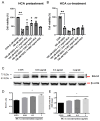
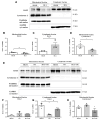

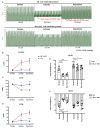
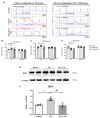

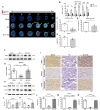
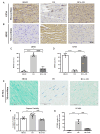
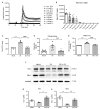
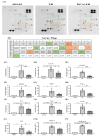
Similar articles
-
Multiple Progressive Thermopreconditioning Improves Cardiac Ischemia/Reperfusion-induced Left Ventricular Contractile Dysfunction and Structural Abnormality in Rat.Transplantation. 2020 Sep;104(9):1869-1878. doi: 10.1097/TP.0000000000003176. Transplantation. 2020. PMID: 32058468
-
L-Carnitine Reduces Myocardial Oxidative Stress and Alleviates Myocardial Ischemia-Reperfusion Injury by Activating Nuclear Transcription-Related Factor 2 (Nrf2)/Heme Oxygenase-1 (HO-1) Signaling Pathway.Med Sci Monit. 2020 May 26;26:e923251. doi: 10.12659/MSM.923251. Med Sci Monit. 2020. PMID: 32452468 Free PMC article.
-
Progressive thermopreconditioning attenuates rat cardiac ischemia/reperfusion injury by mitochondria-mediated antioxidant and antiapoptotic mechanisms.J Thorac Cardiovasc Surg. 2014 Aug;148(2):705-13. doi: 10.1016/j.jtcvs.2013.12.065. Epub 2014 Jan 15. J Thorac Cardiovasc Surg. 2014. PMID: 24507988
-
Isoliquiritigenin alleviates myocardial ischemia-reperfusion injury by regulating the Nrf2/HO-1/SLC7a11/GPX4 axis in mice.Free Radic Biol Med. 2024 Aug 20;221:1-12. doi: 10.1016/j.freeradbiomed.2024.05.012. Epub 2024 May 9. Free Radic Biol Med. 2024. PMID: 38734270
-
2-methoxycinnamaldehyde from Cinnamomum cassia reduces rat myocardial ischemia and reperfusion injury in vivo due to HO-1 induction.J Ethnopharmacol. 2012 Jan 31;139(2):605-15. doi: 10.1016/j.jep.2011.12.001. Epub 2011 Dec 9. J Ethnopharmacol. 2012. PMID: 22179023
Cited by
-
Natural products for the treatment of ulcerative colitis: focus on the JAK/STAT pathway.Front Immunol. 2025 Feb 26;16:1538302. doi: 10.3389/fimmu.2025.1538302. eCollection 2025. Front Immunol. 2025. PMID: 40078988 Free PMC article. Review.
-
The interaction between ferroptosis and myocardial ischemia-reperfusion injury: molecular mechanisms and potential therapeutic targets.Eur J Med Res. 2025 Jul 21;30(1):643. doi: 10.1186/s40001-025-02851-6. Eur J Med Res. 2025. PMID: 40685346 Free PMC article. Review.
References
-
- Luan F., Lei Z., Peng X., Chen L., Peng L., Liu Y., Rao Z., Yang R., Zeng N. Cardioprotective effect of cinnamaldehyde pretreatment on ischemia/reperfusion injury via inhibiting NLRP3 inflammasome activation and gasdermin D mediated cardiomyocyte pyroptosis. Chem. Interact. 2022;368:110245. doi: 10.1016/j.cbi.2022.110245. - DOI - PubMed
MeSH terms
Substances
Grants and funding
LinkOut - more resources
Full Text Sources
Research Materials
Miscellaneous

